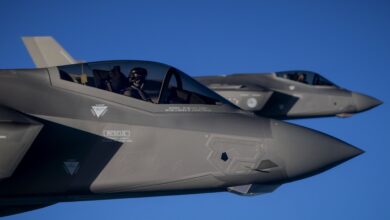Pentagon Calls for Low-Cost Ground-Launched Drones
The US Department of Defense is seeking commercial vendors who can provide low-cost unmanned aerial systems (UAS) that can be employed at scale.
The department did not specify a target quantity or budget, and a Defense Innovation Unit (DIU) spokesperson told Defense News that was intentional.
“The best way to think of what we’re targeting is a cost per effect,” the spokesperson said. “If we launch one $1M platform or ten $100k platforms and generate the same effect, then the cost per effect is the same and that’s what we want to focus on.”
Prospective suppliers must provide solutions capable of supporting a live flight demonstration during Phase 2 of the Commercial Solutions Opening selection process.
As Washington aims to increase its supply of such tech, it has also recently launched a program phase focused on countering drone threats.
Expected Performance
The ground-launched UAS should be able to carry a payload of 10 kilograms (22 pounds), ideally over 25 kilograms (55 pounds), and travel a minimum distance of 50 kilometers (31 miles), ideally over 300 kilometers (186 miles).
It should be capable of quick launch and operate in high-speed, low-altitude, beyond-line-of-sight flight in disrupted, disconnected, intermittent, and low-bandwidth (DDIL) environments and Global Navigation Satellite System (GNSS)-denied conditions.
Additionally, the UAS should be able to execute its missions autonomously without continuous operator communication while ideally equipped with multiple pathways for two-way communication.
Finally, it must be difficult to detect and track by broad-area search systems.
Hardware/Software Integration
The mission planning software must be intuitive and allow seamless integration with first- and third-party platforms.
However, proprietary interfaces, message formatting, or hardware that require vendor-specific licensing are not permitted.
The solution will be evaluated based on its ability to quickly integrate third-party software, hardware components, and payloads in a modular, warm-swappable manner, ideally within hours.
Solution Brief
The Department of Defense reminds prospective suppliers to describe their proposed platform’s physical form, constraints, ground launch mechanism, operational limitations, and rate of launch per team.
The brief must also detail the UAS’ mechanisms and ability to perform terminal guidance in DDIL and GNSS environments.
Suppliers must provide information on the drone’s precision, accuracy, reliability, number of flight tests conducted to date, as well as relevant details about testing environments, production facilities, and projected production capacities.
Teaming solutions will be considered, but all proposals need to address hardware and software requirements holistically.












